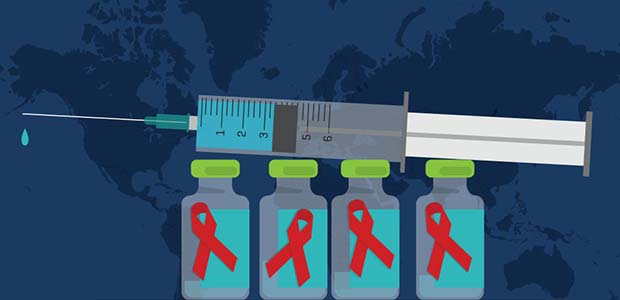Forty years ago, the AIDS epidemic arrived when the first cases were officially reported by the Centers for Disease Control and Prevention. But while there has been monumental progress fighting the virus since then, questions remain about why there still is no HIV vaccine.
The development of a COVID-19 vaccine, in record time last year, has intensified questioning why an HIV vaccine remains elusive.
COVID-19 has killed millions, but even a pandemic of that magnitude still doesn’t compare to the catastrophic death toll that’s been attributed to AIDS over the past four decades, an unrelenting disease caused by a virus that effectively wipes out the body’s immune system.
While both diseases are lethal, a stark difference in their mortality rates exists. Untreated, AIDS is a death sentence almost 100% of the time. Forty years of study have given scientists great depth of knowledge about an affliction that doctors initially found in homosexuals and some observers called the “gay cancer.”
Researchers believe the HIV virus originated a century ago when it jumped from animals to humans around the 1920s. It then took about 60 years for it to begin to spread among humans.
In its Morbidity and Mortality Weekly Report on June 5, 1981, the CDC officially brought the disease to the fore by describing the first cases in Los Angeles found in five previously healthy young men. It wasn’t long before more cases were seen in New York City, San Francisco and other U.S. cities.
The report noted that two of those first five patients had died and two acknowledged having frequent homosexual contact with various partners.
“The fact that these patients were all homosexuals suggests an association between some aspect of a homosexual lifestyle or disease acquired through sexual contact,” the CDC’s MMWR said, although it took scientists a long time before they were able to prove that AIDS could be transmitted sexually.
By the end of 1981, more than 100 gay men were dead of the disease, and a stigma enveloped the virus as terms like “gay plague” were widely used. Panic grew further when some insisted that it could be contracted just by being near an infected person.
“An increasing number of men, mostly homosexuals, are suffering from a mysterious new syndrome that turns usually harmless viruses and bacteria into killers,” UPI reported in December 1981.
“It’s an extraordinary business and really quite frightening because nobody knows the cause,” Dr. Frederick Siegal, an immunologist at Mount Sinai Medical Center in New York City, told UPI at the time.
“I wouldn’t be surprised if it’s something we’ve never heard of before.”
Beginning with advances in medications in the 1990s, people with HIV can now expect to live a long life if they begin treatment early. Also, scientists learned a few years ago that the treatments also prevent infected people from transmitting the disease to others.
But after billions of dollars spent on research, the world is still waiting for a vaccine. Though the cocktail of drugs make HIV a manageable disease, they don’t amount to a cure.
Dr. Ronald C. Desrosiers, a professor of pathology at the University of Miami Miller School of Medicine, said the complexity of HIV is the reason a vaccine has been elusive.
“The problem is not a failure of government. The problem is not lack of spending. The difficulty lies in the HIV virus itself. In particular, this includes the remarkable HIV strain diversity and the immune evasion strategies of the virus,” he wrote in The Conversation in May.
Desrosiers, whose lab discovered the monkey version of HIV, says the virus’ continuous replication means it needs a vaccine with an “absolute sterilizing barrier” to block the copying process. Other traditional vaccines, by contrast, need only to keep a virus from reproducing.
While researchers could produce a vaccine to spur antibodies for one particular strain, it wouldn’t be effective against the thousands of strains that HIV could produce. Also, Desrosiers said, HIV has evolved over time to protect itself.
For comparison, HIV and the coronavirus both have spiked protein on their surfaces, but Desrosiers says the HIV virus is better protected from antibodies because it has a heavier glycoprotein.
In an email to UPI, he said that his research could ultimately find a way to better combat HIV.
“I am optimistic about one thing, a thing that I am devoting my life to — long-term delivery of potent broadly neutralizing antibodies using an AAV (adeno-associated virus) vector,” he wrote.
“It is not a vaccine in the classic sense, but it is analogous in that it is directed to preventing infection, or curing infection.”
Today, HIV-infected patients can take medications to mute the virus to undetectable levels. However, the disease would return to full force once the medications are stopped, thus, highlighting the need still for a cure.


COMMENTS